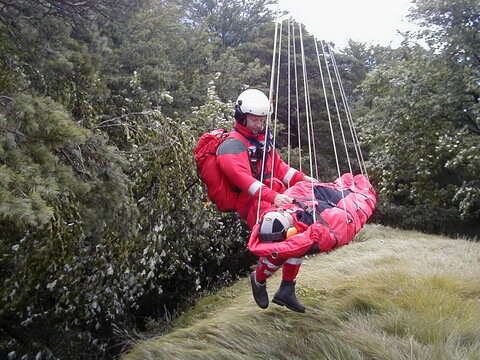Qualifications for Emergency Doctors in Mountain Rescue Operations

Introduction
Medical treatment in the mountain environment is different to that in other rescue operations. Geographic conditions, terrain, tactical considerations, medical equipment, weather conditions, and the limitations of daylight may all make mountain rescue operations a great challenge for the entire team. These circumstances can limit medical treatment. It is essential that rescue equipment and tactics are appropriate for the terrain and that suitable rescue equipment and trained personnel (mountain rescuers and mountain rescue doctors) are available day and night.
Because only a small percentage of rescue operations in the area covered by an air rescue unit may take place in mountains, some may question the need for special training programs and treatment strategies adapted to mountainous terrain.
In countries with mountains a small proportion of operations takes place on hiking trails, in avalanches, glaciers, steep rock and in canyons. Emergency medical treatment requires cooperation with the local ground rescue team, although in some cases the patient must be immediately evacuated. The doctor should reach the site of accident (the patient) as soon as possible , either first or as a member of the first rescue team. There he has to make the decision to perform therapy etc. or to start emergency evacuation .
This means that the doctor must be comfortable in exposed situations, must be conscious of his own safety and that of the patient and be able to work under extreme conditions. Because in many operations he and one rescuer might be by themselves, he must be able to perform winch or long-line operations. He must be able to accept that medical treatment may be limited. In case of bad weather, the doctor must be able to move safely and when necessary to descend alone. The doctor must be physically fit and technically skilled in order to carry out these activities.
Many doctors who are active in air rescue deny the need for these skills on the grounds that the number of mountain rescues is relatively small.
Recommendations
The International Commission for Mountain Emergency Medicine makes the following recommendations:
For operations in mountainous terrain, the emergency doctor must have technical mountain knowledge and experience. In all countries where a certain percentage of air rescue operations takes place in mountainous terrain, training must include theoretical and practical skills for moving (climbing) in steep terrain in summer and winter conditions, self-belay and other rescue manoeuvres, patient transport, management of avalanche victims and other specific emergencies. The training program must be coordinated between the mountain rescue service and the medical directors. The doctors should have to pass the same medical checks as other members of the air crew.